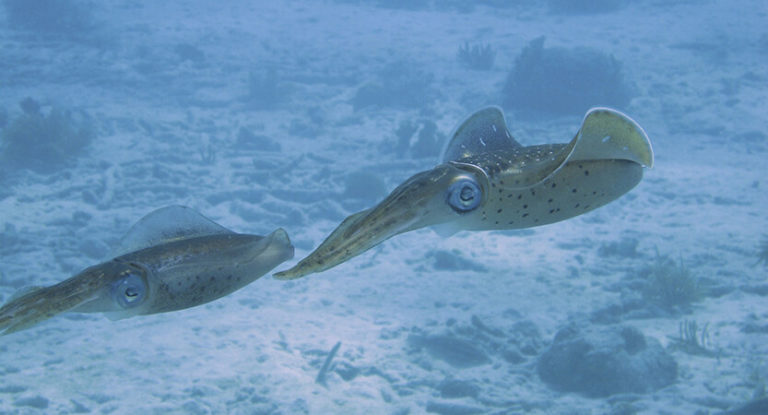Pike is the recognized queen of our reservoirs, which every angler wants to catch. Even caught “pencils” can cause genuine joy, let alone the extraction of trophy specimens! However, this predator is wise and cunning, loves to hunt alone, swiftly rushing to prey from an ambush, and often unravels the intentions of the fisherman. In this article, you will learn the main secrets and be able to learn how to fish for pike both on ice and in clear water, and outwit the “live torpedo”.
Zherlitsa is a fairly simple, one might say, primitive tackle, with skillful handling demonstrating good catchability when catching predatory fish. It is known to fishermen from time immemorial, does not require expensive equipment, and can be used in any season. When fishing with a set, you need special skill: the main thing is to choose a promising place and properly equip the tackle. And with these moments we will figure it out now.
Here is an overview of the content of this tutorial, feel free to jump to any section you care about:
For more fishing instructions, take a look at these popular Trizily links: Best Fishing Lines, Best Baitcasting Reels.
Principle of pike fishing in winter
The majority of anglers agree that the use of fishing tackle is the most expedient way to catch large predatory fish on ice. In particular, when catching pike, vertical lure brings good results only when the weather changes towards a thaw, as well as on the first and last ice. It is also good to use it when the exact location of the ambush of the predator is known.
In the harsh winter, on hard ice, the use of passive gear is best justified. The only serious problem here is the analysis of the winter behavior of pike, taking into account the weather, food supply, and the characteristics of a particular reservoir. The catch of live bait also becomes a somewhat troublesome task , but this is also a matter of technology.
An important factor that speaks in favor of using winter girders is the availability of this tackle in every sense. Vertical fishing, like any active fishing method, requires some skill. Even a beginner who goes on a winter fishing trip for the first time can use the set-up (whether it is effective or not is another matter). With some experience, you can effectively catch pike with the most primitive rig, assembled literally on your knee.
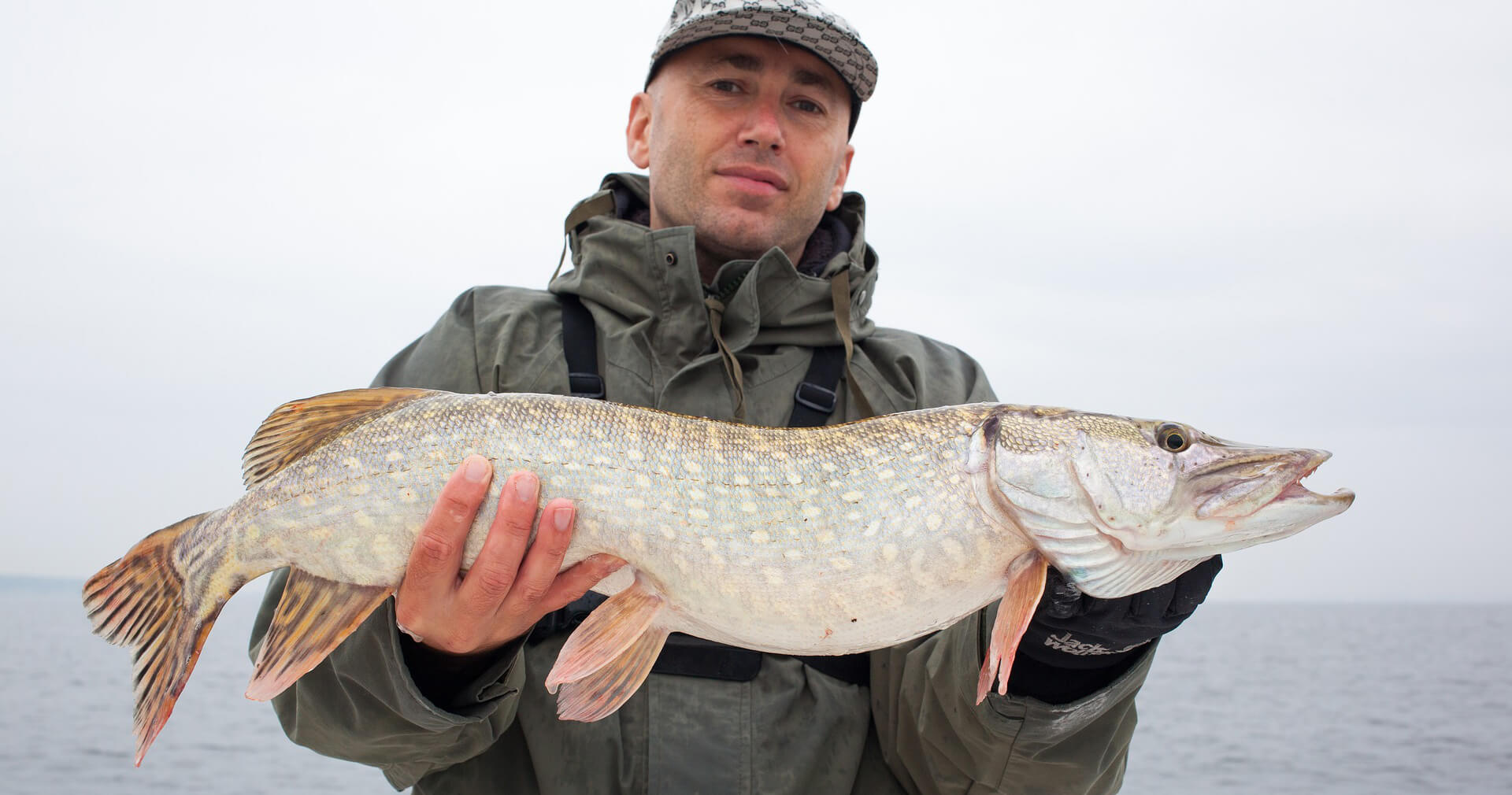
Features of winter pike behavior
In winter, any fish becomes lethargic: some species fall asleep, others continue to hunt. The pike does not sleep in winter, but it significantly changes the way of life: sometimes outwardly promising places are empty. Fishing success depends on many factors resulting from the characteristics of the predator’s winter behavior.
- The weather . It is advisable to fish with zherlitsa during periods of stable weather. It can be a prolonged thaw, calm weather with light frost, severe frost in bright sun. The fact is that when the temperature drops, the predator temporarily reduces activity. In severe frosts, the pike usually stands in pits, but with a thaw it goes hunting in shallow water, to the coastal reeds.
- Migration . In each reservoir, the pike behaves individually. If on small rivers it is found almost everywhere, then in reservoirs of a large area in search of a catchable place you have to work hard, exploring both coastal and deep areas. In this case, the advice of fishermen who know this reservoir can be of invaluable help.
- Seasonality . The movements of the pike are based on their food preferences: the predator should be looked for where its main prey has moved. Therefore, at the beginning of winter, special attention should be paid to coastal areas and snags, covering the maximum area. In the middle of the winter season, it is advisable to survey the deeper-water areas, at the end of the season – again shallow water and areas of confluence of tributaries (the pike prepares for spawning and gradually moves to the river mouths).
Gear arrangement
The basis of the device for any zherlitsa (post, flag) is a reel with a fishing line. Constructive solutions can be different, the main thing is that they meet the assigned tasks, including:
- Strong hold of the rig in the hole in the charged position in all weather conditions;
- A clear signal about a predator’s bite, but ignoring the movements of the live bait;
- Comfortable use at all stages, including transportation and charging.
All known supply variations are designed to meet the above requirements. Most often, the following designs are used for pike fishing in winter :
- On the platform . Factory winter vents have platforms in the form of metal discs for maximum stability, but polymer structures are also commercially available. The latter are lighter in weight and theoretically more comfortable to use, but subject to high quality material. The platform is installed directly on the hole (we monitor the diameter), the working line is passed into the slot, the flag on a flexible metal rod (spring) is bent and rests on the coil, thereby fixing it. When biting, the line begins to unwind, the flag soars up, signaling the bite.
- On a plank . The base plate is equipped with a reel, flag and two brackets. In the charged position, the flag and the loop of the line are wound by the staples. The zherlitsa is laid across the hole, when the line is triggered, it slides off, and the flag signals a bite. Such structures do not protect the hole from freezing, but they play their role quite well.
- On legs . The basis of such structures are stakes, tripods, crosses, and so on. The principle of operation is similar to the above. This category of supplies has one significant drawback, instability, which limits their popularity among anglers.
- Under the ice . To use such structures, you have to drill two holes: for the tackle itself and for its maintenance. This option is justified when installing vents on nearby reservoirs for a long period with the possibility of regular checking. They provide for the possibility of fish self-landing.
Rigging for winter pike fishing
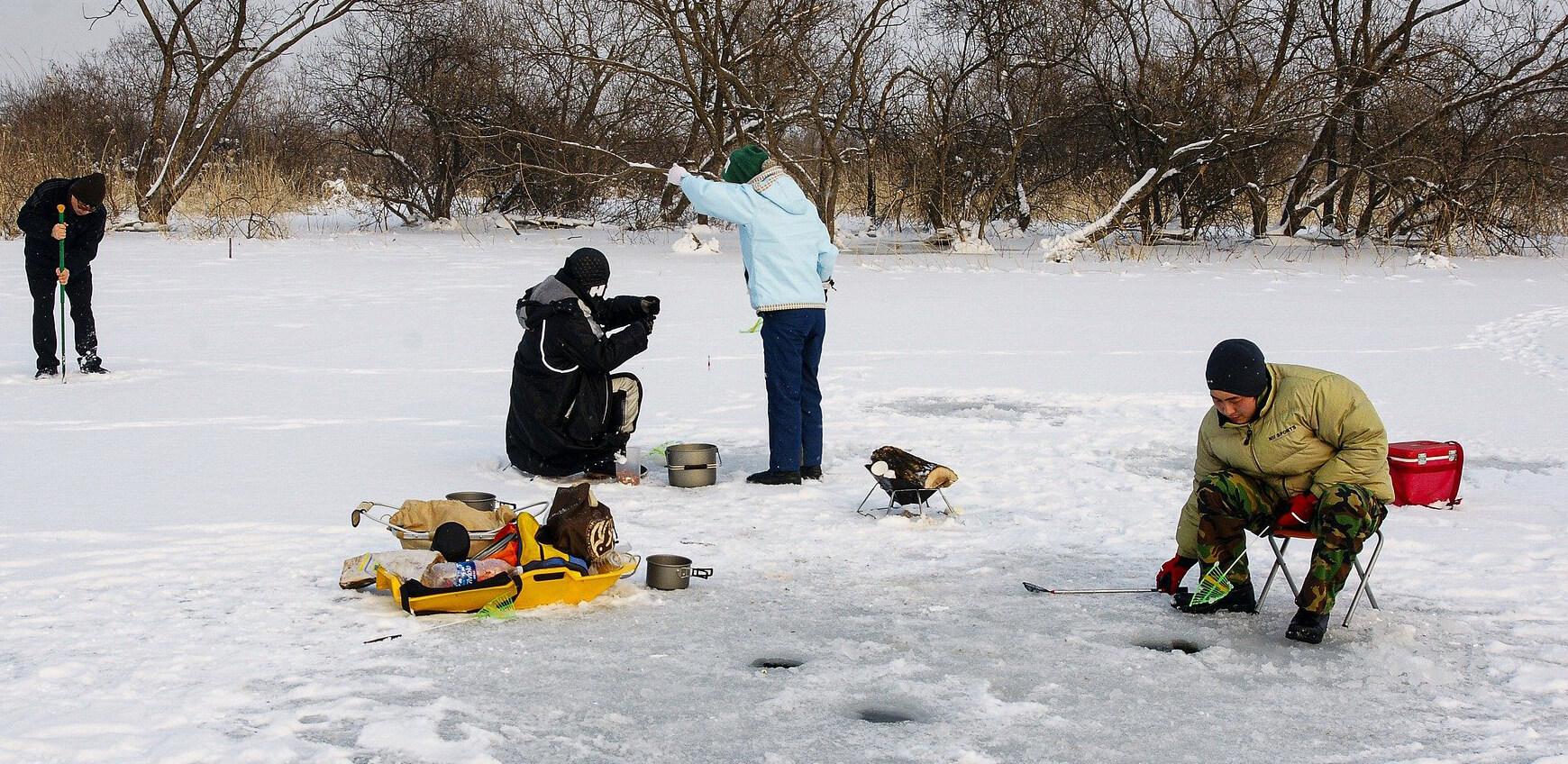
All types of gutters consist of a reel (less often a reel), a line (main and a leash), a sinker and a hook. When fishing in shallow water, experienced anglers do not use sinkers.
You can efficiently catch pike even on inexpensive, simple reels , which, if properly configured, successfully cope with their function. Tuning the reel consists in tightening the screw: it should rotate easily, but not too freely, otherwise “beards” from the fishing line will form on the tackle.
The main line requires about 20-30 m, and it is better to opt for winter fluorocarbon. So, the rig looks like this (top to bottom):
- Main line (0.3-0.4) mm . Here it is important to maintain a parity between stealth and strength – pike in winter is very careful in action.
- Sinker . In this case, the best option would be a sliding “olive” weighing 10-15 grams. In order to increase the versatility of the tackle (to remove the load in shallow water or change it to a heavier one in a strong current), sliding beads with carbines are used, on which the sinkers cling.
- Fastening . A rubber bead is used as a stopper, and the leash is attached through a swivel.
- Leash . When it comes to fishing on the first ice or before the ice drift. A leash is definitely needed: the fish during these periods is quite active and desperately resists being removed from its native element. In the wilderness, the priority is the invisibility of the tackle: the pike is cautious and not so active. Kevlar, tungsten and nichrome cables are used as leashes, and you should always have a few in stock.
- Hook . The hook must definitely be of very high quality and durable, made of hardened steel. If the bait is too small or the invisibility of the tackle is at the forefront, single hooks are used, in other cases – “doubles” and “tees”.
The final touch is a checkbox . Experienced fishermen usually replace the included canvases with homemade, larger and brighter ones, which means they are better visible. For night pike fishing, the flags on the girders are coated with a fluorescent compound.
Search for promising places
When catching pike, you should always pay attention to the areas of the reservoir, which are different from their own kind. If it is not so much problematic to do this in shallow water, then it is not an easy task to explore the bottom relief at depth, especially in winter. In this regard, it is recommended to acquire an echo sounder and / or an ice drill with an electric or gasoline engine . When fishing in an unfamiliar body of water, you may have to drill several dozen holes.
As promising places can be considered:
- shallow water overgrown with vegetation;
- the line between sedge and clean water;
- places under trees hanging over the water, in front of gullies in the roots;
- driftwood, driftwood, pitfalls;
- areas behind barriers;
- backwaters and bays;
- areas where the current changes direction or speed;
- curbs, holes, heaps.
It is rational to start the search for promising places in rivers with the study of coastal areas and backwaters. When exploring reservoirs with stagnant water, it is advisable to move the holes from the coast to the depth, paying special attention to the islands of vegetation and other areas listed in the list.
Tackle installation
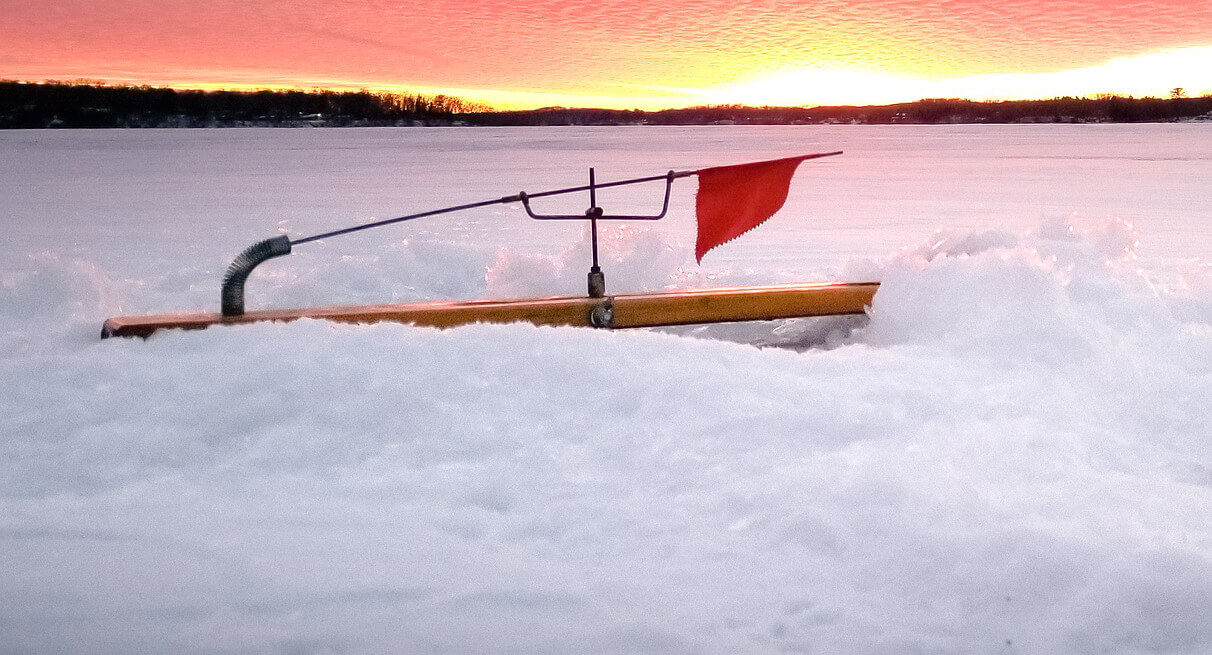
Despite the fact that pike is caught during the whole daylight hours, it would be wise to come fishing even after dark: drilling holes takes time, and it is absolutely impossible to do this completely silently.
Fishing with girders is only formally considered a passive way of fishing: in practice, you have to sweat a lot when drilling holes and run from tackle to tackle. Moreover, you need to move from hole to hole as quietly as possible, especially in shallow water.
In the traditional method of fishing, girders are usually placed along the lines of coastal vegetation at a distance of about ten meters from each other. Has the right to life and placement in two rows: the second line is installed at a distance of a couple of meters from the first. On free ice, it is more rational to place gear in the corners of squares with a side length of about 10 meters.
In winter, pike should be looked for at the bottom: it is there that it gets food. This means that when installing the girders, it is paramount that the bait is 10-20 cm from the bottom. To do this, you need to release the tackle as much as possible before lowering the load to the bottom, then etch it by 15-20 cm. In the presence of bottom vegetation, you must make an allowance of at least ten centimeters. It is especially important to choose the right depth when fishing in shallow water – every centimeter matters there.
Live bait for girders is best kept in a jar filled with water from the same reservoir, periodically making sure that it is not frozen, and the live bait remains active. It is best to hook it under the dorsal fin – this is the simplest and most versatile way. When installing the gutter, it is important to make sure that the live bait is not in the “glass”, but in free water between the bottom and the ice.
After reaching the desired depth, the zherlitsa is charged (we insert the fishing line into the slot of the coil, we start the flag behind it in a bent position). When biting, the flag holder will be released, and the banner will be blown up.
Winter fishing tactics on girders
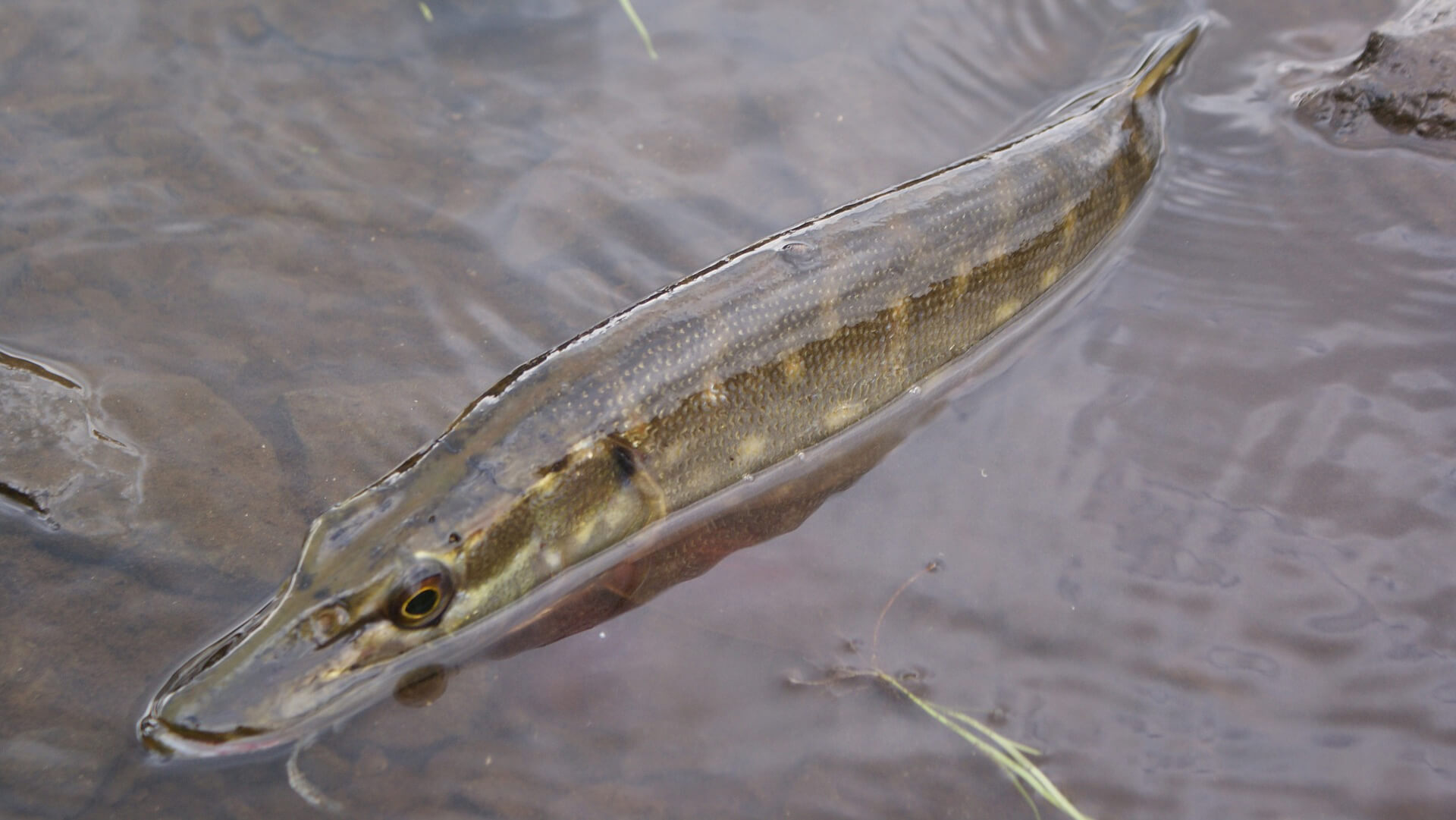
In winter, pike reduces activity and rushes less greedily to prey. Even in the summer, she often grabs her prey across the body and squeezes her teeth with her teeth, and only then swallows, and in winter this style of behavior becomes the norm for her. This must be taken into account when striking.
Experienced anglers know that the triggering of the flag is a signal for readiness, but not for instant action. We look in stages:
- The flag worked – we go to the hole and observe the coil.
- The reel unwinds – the pike swims away, holding the prey in its mouth.
- The unwinding stopped – the predator paused to swallow the bait.
- Unwinding resumed – the pike has swallowed the bait and is sailing away from the tackle.
The pike should be hooked after the start of the second unwinding of the coil – at this moment the live bait is already in the predator, along with the hook. However, there are times when it behaves in a non-standard way: in this case, the unwinding does not stop, and the hook should follow after there is already little line on the reel.
In the process of playing, the pike offers tangible resistance, but in general it is easier to cope with it than with an individual of the same size in open water. Already in the hole, you should pick up the predator under the gills with a hook, otherwise there is a risk that it will leave with the leash. It is recommended to remove the hook using a special extractor, forceps, or, in extreme cases, a knife, but not with bare hands – the wounds from the predator’s teeth are very painful and do not heal well.
Free water use
On free water, supplies are not used as often as on ice, however, there are plenty of fans of this type of fishing. Summer zherlitsa are also passive gear, for which spinningists do not favor them, considering them unsportsmanlike. However, this is a matter of morality and habits: the efficiency of summer supplies is beyond doubt.
Additional advantages of this type of fishing are:
- Availability . The simplest girder can be made independently: a fishing line, a leash, a sinker, a hook, a reel from a piece of wood or a plastic bottle – that’s, in fact, that’s all.
- The ability to service multiple gear . One angler can handle five or more tackle, depending on the type of construction and installation location. They can be installed even at night, checking in the morning, which is what the inhabitants of the villages located near water bodies do.
- Minimizing the risk of snagging . All designs are designed for plumb fishing, which means that any free window in vegetation can be used.
In the summer, it is easier to get live bait, but keeping it alive and mobile in warm water is more problematic. It is necessary to constantly change the water and get rid of the sleeping bait. When fishing for pike with gills, it is best to use live bait caught in the same reservoir, and it is better to plant it under the dorsal fin or by passing the leash through the gills.
Tackle designs
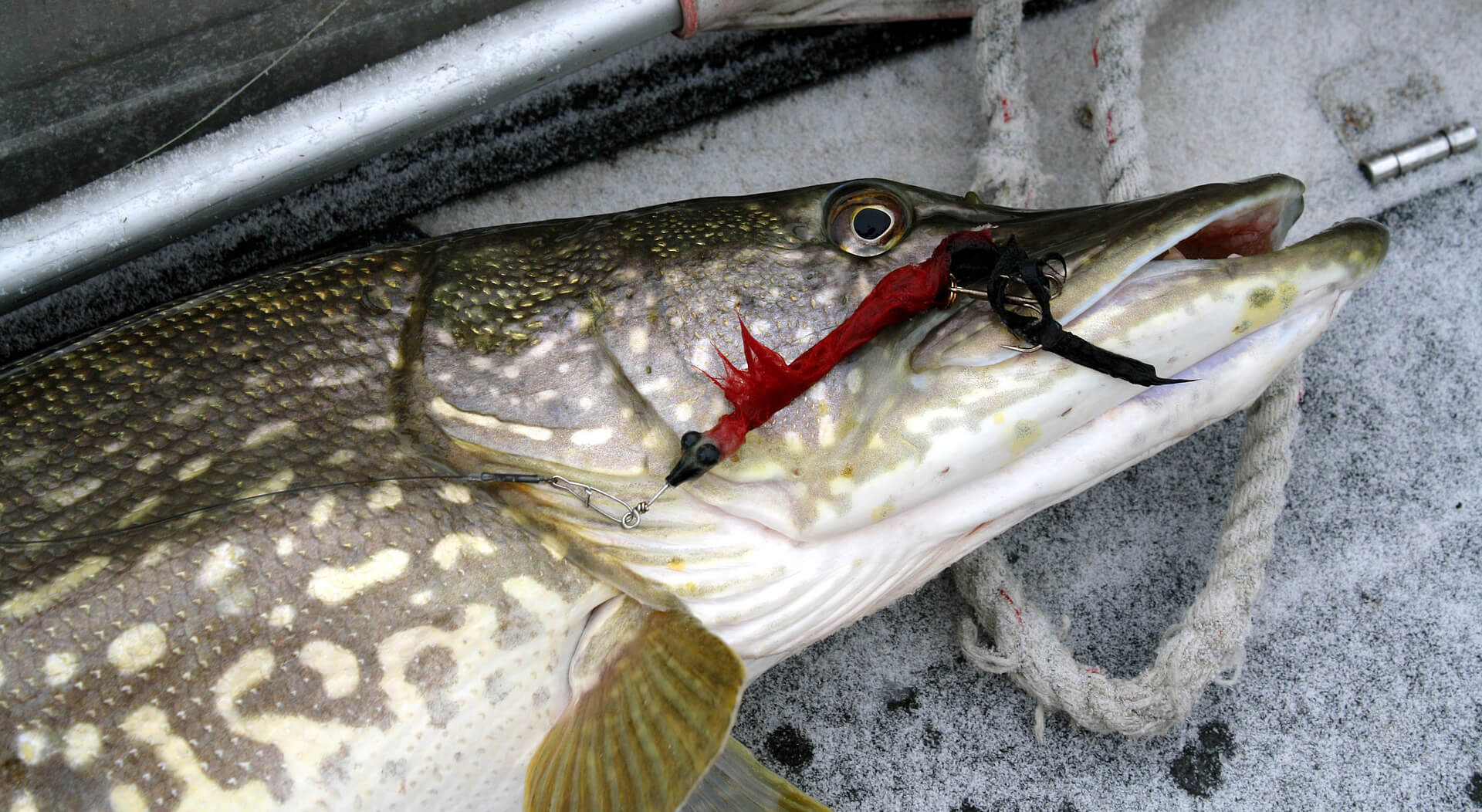
There are a lot of constructive solutions for summer girders: in the process of improving the tackle, each angler could make adjustments. Now the lion’s share of them is still made by handicraft, but there are also ready-made models on sale that only need to be equipped (for example, floating mugs).
All girders can be divided into the following types by design :
Classic . The traditional and most budgetary option involves the presence of a reel, which can be made from a plastic bottle or a piece of wood. A standard reel of 100 m of line is enough to rig five classic sets. Further, simply – a load, a leash, “double” or “tee”. The tackle is fixed on any support – a tree or a personally driven peg. The tackle is charged as follows: a loop of the scaffold is selected a meter or two in length and fixed with a pharmaceutical rubber band.
With a reel . The rigging of the reel with a reel resembles a winter girder of a similar design: a stand, a reel loaded with a fishing line, a flag that, in working condition, is wound behind the reel and released when biting. A sinker, a leash, a hook, a live bait on it – everything is as in the previous case.
Floating . Zerlitsa of this type outwardly are circles made of floating material (in the factory version – made of artificial polymer, handicraft – wood, bottle plastic and even reeds), with sides of different colors. In purchased designs, there is a rod with a ball, which serves both to secure the rig and as a bite alarm. The pike takes the live bait – the circle turns over. The structure can be anchored or moored to a peg on the shore.
Suspended . Before us is another very popular and budget tackle for pike fishing. The basis of the tackle is a wooden slingshot, at the ends of which cuts are made to fix the fishing line, and a cable or rope is attached at the base (preferably through a hole). A fishing line with a rig is wound on the base of the “eight”, easily sliding off when biting. Tackle is usually attached to coastal trees.
Suspended with shock absorber . An elastic model acts as a shock absorber. This constructive solution looks like this: a fishing line and an elastic band are attached to the pole (the length ratio is 4: 1), the second end of the model is tied at the leash. Charging is carried out by secondary free fastening of the fishing line on a pole with a loop equal to the length of the elastic band. This tackle is self-landing and does not need vigilant supervision.
Anchored . Any load can serve as an anchor, an empty plastic bottle can serve as a float holder. We attach a pole to the bottle, to it from the other end – standard equipment (fishing line, weight, leash, hook). A variation of this design is to mount the float bottle in the center of the pole and two rigs at the ends.
The optimal design of the girder is chosen according to the fishing conditions, personal preferences and financial capabilities.
Choosing a promising place
The general principle of choosing promising places in the summer is similar to the winter one: special attention should be paid to areas that stand out from their own kind. These are coastal thickets, driftwood, wash-outs, places with variable current patterns and depth differences. It is important to take into account the peculiarities of the behavior of the pike: it loiters in search of food slowly, and prefers to hunt from ambush.
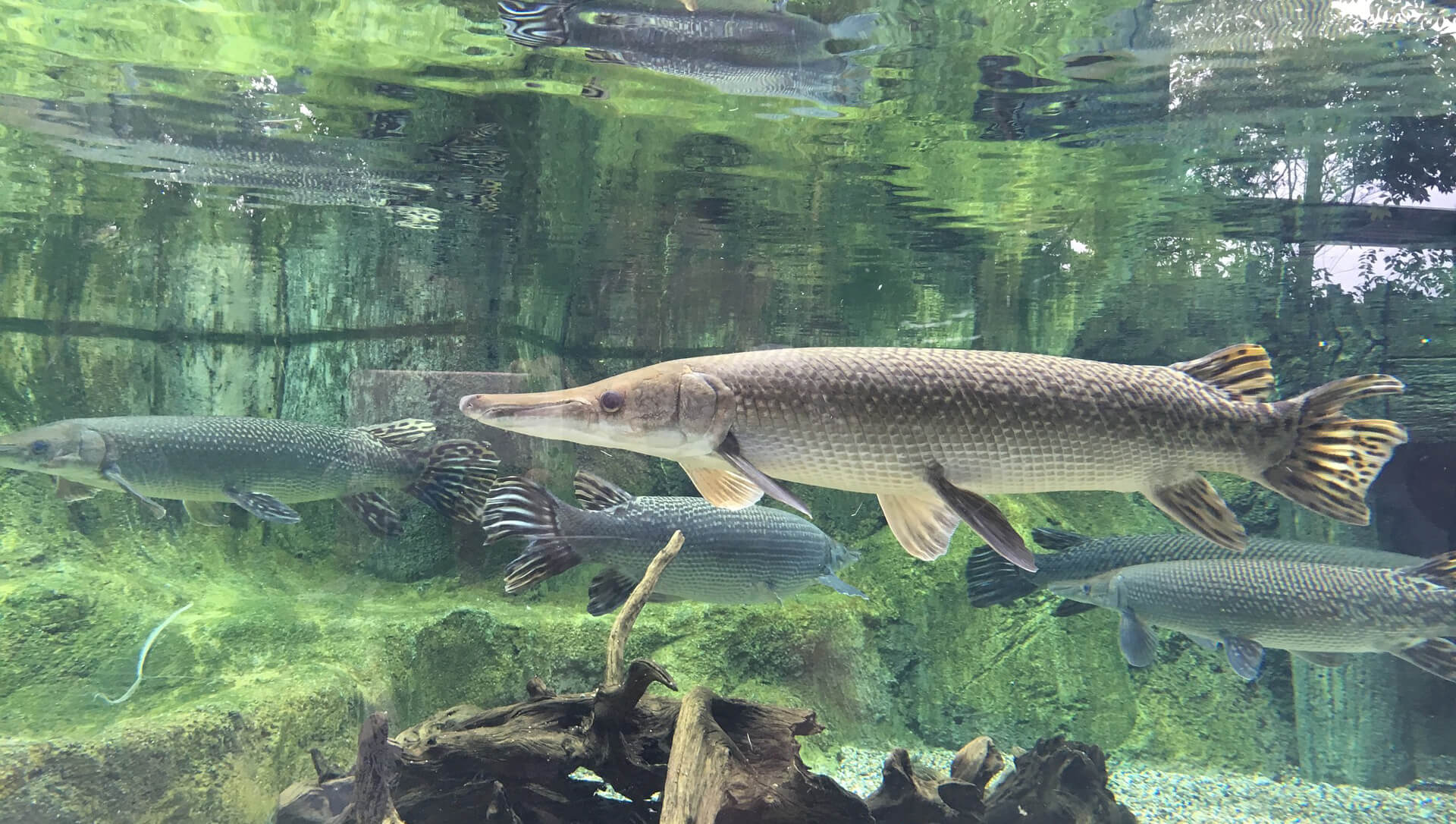
General trends in pike behavior in the summer months look like this:
- June . The water is not yet too warm, so the pike can be found even in shallow water, where slightly grown juveniles of other fish go out in search of food. The predator at this time is very gluttonous, as it continues to actively feed after spawning. It is better to catch it near coastal thickets, in creeks, on shallows.
- July . The hottest month is characterized by the maximum heating of the water and a decrease in the amount of oxygen in it. The pike goes to cooler places, deeper. At this time, fishing in pools beyond the rapids of rivers, in bottom holes , near steep banks will be effective .
- August . The most productive month in terms of catching a predator, especially in cold weather. The pike is already preparing for the winter period and begins to fatten up before the cold weather, hunting for everything and everyone.
The above are general trends in the summer behavior of pike, which can vary significantly depending on the specific water body, food supply and weather conditions.
Summer fishing tactics
When fishing for pike on all types of supplies, you should adhere to the following rules:
- Fishing at the bottom is usually the most effective, so live bait should be at a distance of 20-30 cm from it. In shallow areas, this distance is further reduced.
- The lead is usually used in all types of tackle, as its presence prevents the line from tangling and limits the activity of the live bait. The optimal weight of the sinker is the mass of the live bait multiplied by two.
- The choice of hook depends on the size of the live bait. “Single” is rarely used, only when the fry is attached. The most efficient ones are rightly considered “doubles” and “tees” made of hardened steel.
- A leash is required: in the summer the predator is hungry and active, so that it is not invisibility that comes to the fore, but the strength of the tackle.
- There is no need to hurry with the hook: it is worth waiting for the reeling of several meters of fishing line – so the probability is higher that the live bait is not just caught, but swallowed.
- When fishing for pike with zherlitsa, it is imperative to use a landing net and a tool to extract the hooks from the mouth.
We hope our story will be useful for both beginners and experienced anglers – it is harmless to learn something new, isn’t it? We wish you to get more big trophies and get a lot of pleasure from the fishing process itself!

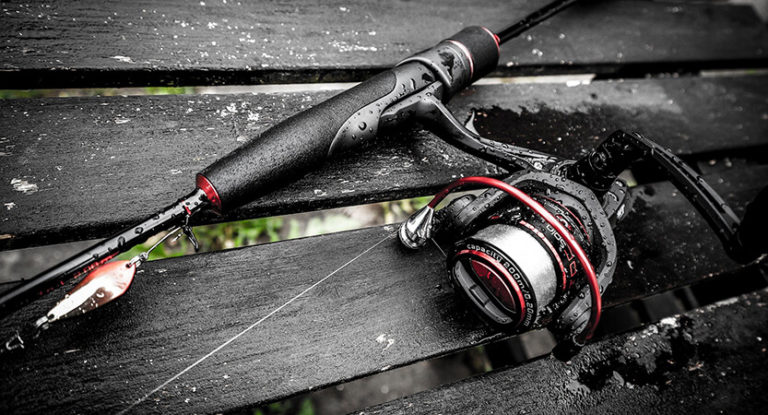
![The 9 Best Fishing Canoes in 2023 [Ultimate Guide] 8 The 9 Best Fishing Canoes in 2023 [Ultimate Guide]](https://trizily.com/wp-content/uploads/2022/03/best-fishing-canoes-768x768.jpg)
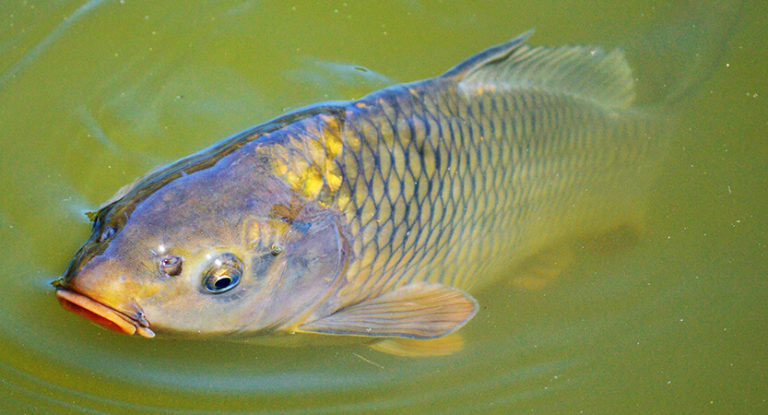
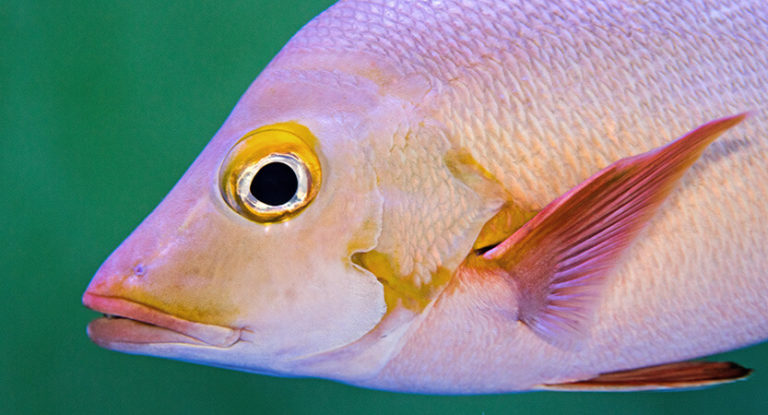
![The 9 Best Fishing Lines of 2023 [Tried & Tested] 20 The 9 Best Fishing Lines of 2023 [Tried & Tested]](https://trizily.com/wp-content/uploads/2021/12/best-fishing-lines-768x415.jpg)
